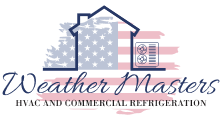When we call for air duct cleaning, we expect quick and dependable service. Delays can affect indoor air quality and comfort, especially when dust or allergens build up. Evaluating the response time of air duct cleaning services helps us choose a company that values efficiency and professionalism.

We can look at what affects how fast a service responds, from scheduling and staff availability to equipment readiness. These factors show whether a company can handle urgent requests or only works at a slower pace. Comparing professional and DIY cleaning also helps us see how time and results differ between both options.
By understanding how the cleaning process works and what standards guide the industry, we can make smarter choices. Reliable companies communicate clearly, arrive on time, and complete the job without unnecessary delays. This approach saves us time and ensures our air systems stay clean and efficient.
Key Factors Influencing Air Duct Cleaning Response Time
Response times vary based on the HVAC system’s size, the amount of debris, how accessible the air ducts are, and whether extra services are needed. Each factor affects how quickly technicians can begin and complete the cleaning process.
Size and Complexity of the HVAC System
Larger or more complex HVAC systems take longer to assess and clean. A small residential system may be serviced within a few hours, while a multi-zone commercial setup could require a full day or more.
We consider the number of vents, duct branches, and system components when estimating response time. More ducts mean more inspection points and longer preparation.
Technicians also need to identify the type of system; forced air, central air, or variable air volume; since each design requires different equipment and cleaning methods. Complex systems often need specialized tools and additional workers, which can delay scheduling and extend total service time.
Level of Contamination and Debris
The amount and type of buildup inside the air ducts directly affect how soon cleaning can start and how long it will take. Light dust and minor debris can be removed quickly. Heavy contamination, such as mold or pest waste, requires extra safety steps.
We often perform a visual inspection or use camera scopes to measure contamination before quoting a response time. If the ducts contain sticky residue or moisture, drying or treatment may be needed first.
In some cases, we must use HEPA-filtered vacuums and sanitizing agents, which add time to both preparation and cleanup. The more severe the contamination, the more careful and time-consuming the cleaning process becomes.
Accessibility of Air Ducts
Easy access to air ducts helps technicians respond faster. When ducts are located behind walls, above ceilings, or in crawl spaces, reaching them takes extra time and planning.
We assess accessibility during the initial inspection. If panels, furniture, or insulation block entry points, we must remove or move them before cleaning can start.
Table: Common Access Challenges
| Obstruction Type | Impact on Time | Typical Solution |
|---|---|---|
| Ceiling ducts | Moderate | Use ladders or lifts |
| Crawl space ducts | High | Add lighting and safety gear |
| Hidden vents | High | Remove panels or drywall sections |
Limited access often requires additional equipment and safety measures, which can slow down both the start and completion of the service.
Additional Services Required
Sometimes air duct cleaning services include extra tasks beyond standard cleaning. These can include filter replacement, coil cleaning, air quality testing, or sanitizing treatments.
Each added service increases the total time needed. For example, replacing filters is quick, but treating mold or cleaning coils requires more specialized steps and equipment.
We also coordinate with clients to confirm which services are necessary before starting. This helps us plan labor, tools, and materials efficiently.
When multiple services are requested, technicians may need to extend the appointment or schedule follow-up visits, which affects overall response time.
Evaluating Professional vs. DIY Air Duct Cleaning Efficiency
We can measure cleaning efficiency by how quickly and thoroughly air ducts are cleaned and how much the work affects indoor air quality. Both professional and DIY air duct cleaning methods differ in tools, time, and long-term results.
Comparison of Response Times
Professional air duct cleaning services usually respond faster once scheduled because they have trained teams and specialized equipment. Many companies offer same-day or next-day appointments, especially for urgent cases. The actual cleaning often takes 2–4 hours for an average home.
DIY air duct cleaning depends on our own schedule and tools. We can start immediately, but the process often takes longer. Without high-powered vacuums or rotary brushes, we spend more time reaching deep sections of the ducts.
| Approach | Average Response Time | Cleaning Duration |
|---|---|---|
| Professional | 1-2 days | 2-4 hours |
| DIY | Immediate | 4-8 hours or more |
Professional teams reduce downtime and complete cleaning in one visit. DIY efforts may stretch over multiple sessions, especially in larger homes.
Impact on Indoor Air Quality
Clean air ducts improve indoor air quality by lowering dust and allergen buildup. Professional air duct cleaning removes fine particles that basic household vacuums cannot reach. Technicians use HEPA-filtered systems that trap contaminants instead of redistributing them into the air.
DIY air duct cleaning can help maintain cleanliness between professional visits. However, without proper suction power, we risk loosening debris that then circulates through the vents. This can temporarily lower air quality instead of improving it.
We can test results by checking air filter condition, dust levels, and odor reduction after cleaning. Professional services usually show noticeable improvements in air freshness and airflow consistency.
Pros and Cons of Each Approach
Professional Air Duct Cleaning
Pros:
- Deep cleaning with commercial-grade tools
- Faster and more consistent results
- Improved indoor air quality
Cons:
- Higher cost
- Requires scheduling and access
DIY Air Duct Cleaning
Pros:
- Low cost and flexible timing
- Useful for light maintenance
Cons:
- Limited reach and equipment power
- Higher chance of incomplete cleaning
- May not significantly improve air quality
Choosing between the two depends on our budget, equipment, and how often we want to maintain clean air ducts.
Understanding the Air Duct Cleaning Process and Industry Standards
We focus on how technicians perform the air duct cleaning process, what standards guide their work, and why mold remediation matters for air quality and system efficiency. Each part plays a role in maintaining clean and safe ventilation systems.
Typical Steps in the Duct Cleaning Process
We start by inspecting the system to locate dust buildup, debris, and signs of mold or damage. This inspection helps determine the right tools and methods for cleaning.
Next, we use high-powered vacuums and rotary brushes to loosen and remove contaminants. The vacuum collects dust and particles through sealed hoses, preventing them from entering the living space.
Technicians often clean these components:
- Supply and return ducts
- Registers and grilles
- Air handler, fan, and coils
After cleaning, we check airflow and confirm that all debris has been removed. A final inspection ensures that the system is sealed correctly and runs efficiently. Proper documentation of the procedure provides proof of service and supports maintenance records.
Role of the National Air Duct Cleaners Association (NADCA)
The National Air Duct Cleaners Association (NADCA) sets key standards for the duct cleaning industry. Its guidelines define how professionals should inspect, clean, and restore HVAC systems.
We rely on NADCA’s ACR Standard, which outlines acceptable methods and tools for cleaning. It also describes safety practices for handling contaminants and protecting both workers and occupants.
Certified NADCA members must follow a code of ethics that promotes honesty and technical accuracy. They are trained to identify system problems, use proper containment methods, and verify cleanliness through visual inspection or testing.
Following NADCA standards helps ensure consistent service quality. It also gives customers confidence that the cleaning process meets recognized industry requirements.
Importance of Mold Remediation
Mold growth inside air ducts can release spores that spread through the ventilation system. We address this issue by identifying moisture sources and using approved cleaning and disinfecting methods.
Mold remediation involves removing contaminated materials, drying affected areas, and applying antimicrobial treatments when necessary. Technicians must wear protective gear and use equipment that prevents cross-contamination.
If mold covers large areas or damages duct materials, replacement may be required. Regular inspections and humidity control help prevent mold from returning.
Effective mold remediation improves indoor air quality and supports the long-term performance of the HVAC system.
Choosing Reliable Air Duct Cleaning Services for Timely Results
We can save time and avoid poor results by selecting air duct cleaning services that show consistent performance, proper training, and clear communication. Reliable providers show their value through measurable quality, verified credentials, and honest customer feedback.
How to Assess Service Quality
We should start by checking how quickly and efficiently a company responds to service requests. A reliable air duct cleaning service provides clear scheduling, accurate arrival times, and realistic completion estimates.
We can also look for written service guarantees and detailed inspection reports. These show that the company takes accountability for its work. When possible, we should ask for a checklist of cleaning steps or a sample job report to confirm the process.
Key indicators of quality include:
| Factor | What to Look For |
|---|---|
| Response Time | Same-day or next-day scheduling |
| Equipment | HEPA-filtered vacuums and rotary brushes |
| Staff Conduct | On-time arrival, uniforms, ID badges |
| Documentation | Before-and-after photos, written reports |
We should avoid companies that give vague answers about their process or refuse to provide proof of results.
Certifications and Experience
Air duct cleaning services with recognized certifications often follow industry standards that help ensure reliable results. We should look for credentials from groups such as the National Air Duct Cleaners Association (NADCA) or Institute of Inspection, Cleaning and Restoration Certification (IICRC).
Certified technicians are trained to handle different duct systems safely and know how to prevent cross-contamination. Experience also matters. Companies with several years in business usually have refined their methods and built a record of timely performance.
We can ask for proof of training and insurance coverage. This protects us if damage occurs during cleaning. A simple checklist helps confirm credibility:
- NADCA or IICRC certification
- Minimum of 3-5 years of experience
- Worker’s compensation and liability insurance
- Documented safety procedures
Choosing a service with both certification and experience reduces risk and improves the chance of fast, dependable results.
Customer Reviews and Transparency
Customer reviews help us verify whether an air duct cleaning service delivers on its promises. We should read reviews on independent platforms like Google or the Better Business Bureau instead of only relying on testimonials from the company’s website.
Consistent positive feedback about punctuality, communication, and thoroughness signals reliability. We should also note how the company responds to complaints. A professional, solution-focused reply shows accountability.
Transparency extends beyond reviews. Reliable providers share pricing details upfront, explain what the quote includes, and outline any potential extra charges. They also provide clear contact information and easy scheduling options.
When a company communicates openly and maintains visible customer feedback, we can trust that it values timely, professional service.




